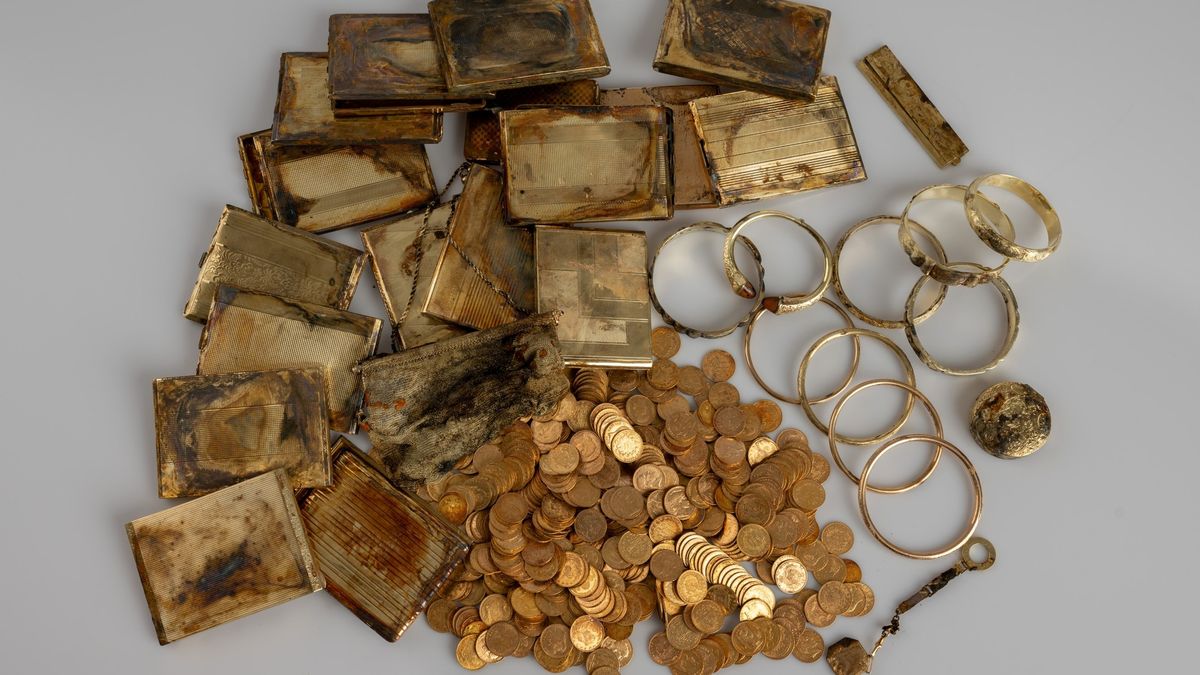GAMINGBOLT.COM
Blades of Fire – Everything You Need to Know
Mlades of Fire is an action-adventure combining hack-and-slash elements with weapon crafting and dense environments. It’s a spiritual successor of sorts to the 2001 cult classic Severance: Blade of Darkness, but what makes it so intriguing? Let’s dive into everything you should know about Blades of Fire before its launch on May 22nd for Xbox Series X/S, PS5, and PC. Setting and Protagonist The short version of the story is that everything sucks. The long version is that Queen Nerea has cursed the land’s steel and reduced it to stone (though her forces remain unaffected). It’s up to Aran De Lira – and Adso de Zelk – to stop her. Aran is special since he wields a mystical hammer that can create steel weapons. What’s the deal with Nerea? What are the origins of the hammer? All this and more remain to be answered, but it’s up to the player how much they want to learn about the world. Gameplay The gameplay loop consists of two main pillars – crafting weapons and combat. The two are intricately linked since your weapons – and the skills required to wield them – will be the key to overcoming Nerea and her forces. While this may sound like the recipe for your average survival crafting experience, Blades of Fire is more of an action-adventure title. Exploration The game features a vast and intricately designed world where every region is woven into the next through hidden passages and winding routes. As progression continues, the level design evolves into complex, maze-like structures that demand close observation. Navigation becomes a challenge in itself, with players encouraged to rely heavily on maps, personal markers, and memory to stay oriented. With its sheer scale and density, getting lost won’t just be possible—it’ll be part of the experience. Expect to traverse enormous fortresses, regal estates, and a variety of richly imagined fantasy landscapes. Weapon Families There are seven weapon families – daggers, sabers, swords, greatswords, twins, polearms, and spears – with various armaments, from a halberd and curved blade to a two-handed hammer. You can take a claymore into battle with its heft and slow but powerful attacks or opt for a more balanced sword. Forge Scrolls These weapons aren’t available to craft right off the bat, though. Instead, you’ll need to obtain Forge Scrolls. Slay enough of a specific enemy, and the scroll becomes available, letting you craft the weapon in question. Over 30 scrolls await, with an almost “infinite” number of weapon combos promised. Damage Types Of course, you can’t just use any weapon against every foe. Three damage types exist – blunt, slashing, and piercing – with some weapons capable of swapping between slashing and piercing. Depending on the enemy and their armor, the damage type can make a difference between easy fights and protracted affairs. If there are green outlines around enemies, then your weapon’s damage type is effective; red outlines mean trouble, and it’s best to switch to something else. Making Weapons How do you go about making weapons? Gathering materials (read: slaying numerous monsters) and with Forge Scroll in hand, beginning the blacksmithing process. It sounds simple on the surface, but there is a lot to consider. Weapon Stats To be more specific, 14 different stats dictate your weapon’s performance, affecting stamina, weight, blocking, and more. After selecting the right components for a weapon, the actual blacksmithing process begins where you hammer a weapon, carefully adjusting your strike strength, strike width and even the tilt. Stats can’t be perfectly balanced and some will inevitably take precedence while others fade away. Weapon Quality But no matter how finely crafted your weapon, it won’t last forever. As the weapon degrades, you’ll need to repair it, but even that’s limited by the star rating. Depending on the number of stars, you’re limited to that exact number of repairs. And once a weapon breaks, it’s useless, though you can always dismantle it for crafting materials. Whether the star rating affects how many resources are returned is unknown. Combat The combat in Blades of Fire will look familiar, given all the slashing, parrying to make enemies vulnerable, charged attacks, and whatnot. However, you can also change a weapon’s positioning. This can come in handy when, say, sweeping lighter enemies off their feet. Dismemberment is also on the menu, so make sure to target a body part and keep hacking. Souls-Like Elements (and Differences) A stamina bar alone doesn’t a Souls-like make, but Blades of Fire does employ the classic trope of enemies respawning at checkpoints (which are anvils, appropriately enough). However, blocking can regenerate your stamina, attacking from the high ground will consume less stamina, and parrying temporarily grants unlimited stamina. If you fall in combat, your weapon is dropped at the same spot. You must then backtrack and retrieve in a neat twist on the whole walk of shame. 50+ Enemy Types Blades of Fire promises an extensive enemy variety with over 50 types to combat. Thus far, we’ve seen humans armed with weapons, undead, gremlins, trolls, elementals and more. On top of accounting for their attacks and patterns, you also need to consider their armor and swap out weapons to select the best choice. Which is easier said than done when you’re surrounded and need to reposition. Adso’s Role Adso is more than just a lore-dumping machine – he’ll also follow you around, taking notes on the enemies slain. Take out enough foes and you can fill out the bestiary note for the same. For example, Adso notes that Putrids aren’t very smart and have mostly predictable attacks, but they’re good at ambushes and those wielding axes can leap attack to deal more damage. 60 to 80 Hours of Gameplay Blades of Fire is shaping up to be a surprisingly large experience, with projected playtime estimated to run between 60 to 80 hours. It’s still unclear how much of that includes cutscenes, conversations with Adso, or optional side content. Even so, for a linear action-adventure game without typical open-world elements, the overall scope feels impressively ambitious. PC Requirements The PC version’s minimum requirements include an Intel Core i7-11700KF or AMD Ryzen 5 5800X CPU, 16 GB of RAM, and either an Nvidia GeForce GTX 1070 (8 GB) or AMD Radeon RX 5700 XT (6 GB). It’s enough to provide 1080p/60 FPS on High settings, albeit in Performance mode when using AMD FSR. To play 1440p/60 FPS on High settings and Balanced FSR, you’ll need a GTX 1080 Ti (11 GB) or a Radeon RX 6700 XT (12 GB). If you’re aiming for 4K/60 FPS on the same settings, an RTX 4070 Super (12 GB) or an RX 6800 XT (16 GB) will be needed. Finally, to run the game at 4K/60 FPS on Ultra with Quality FSR, a Core i7-13600K or Ryzen 5 7600X, 16 GB of RAM, and an RTX 4080 (16 GB), or a Radeon RX 7900 XTX (24 GB) are needed.









